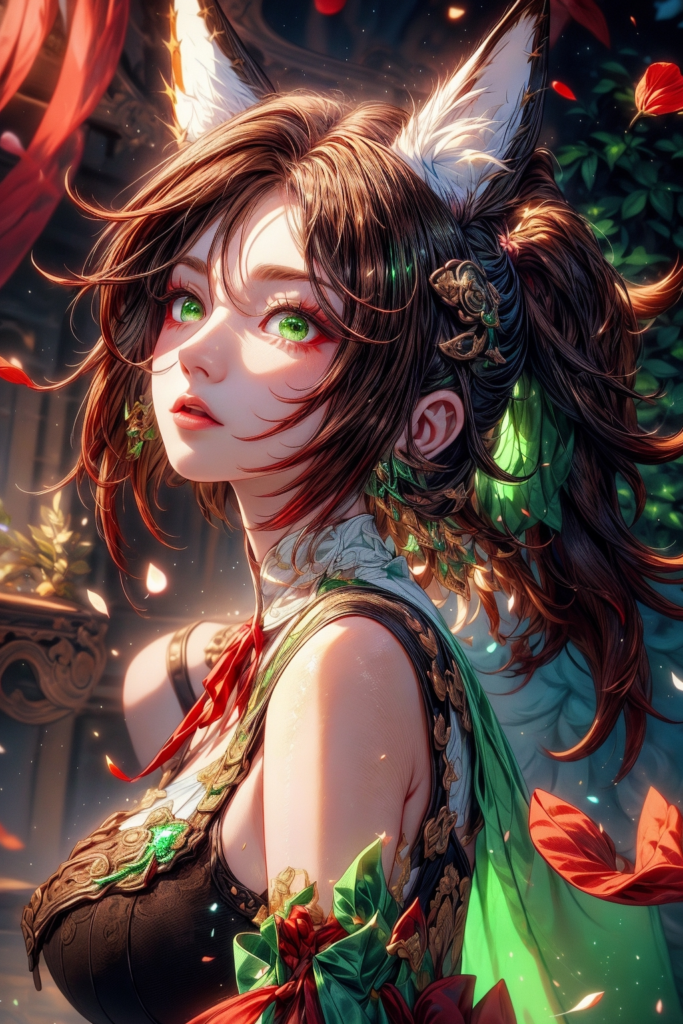Introduction
In the rapidly evolving landscape of AI-powered creative tools, Tensor.art has emerged as a noteworthy player in 2024. This platform harnesses the power of machine learning to transform text prompts into visually striking images, offering both novice and experienced artists a new medium for expression. In this comprehensive review, we’ll explore the features, capabilities, and potential impact of Tensor.art on the digital art scene.
What is Tensor.art?
Tensor.art is an AI-driven image generation platform that uses advanced machine learning models to create images based on text descriptions. It’s part of a new wave of AI art tools that have gained popularity in recent years, alongside others like DALL-E, Midjourney, and Stable Diffusion.
Key Features
1. Text-to-Image Generation
At its core, Tensor.art excels in converting textual descriptions into visual representations. Users can input detailed prompts, and the AI generates corresponding images, often with surprising accuracy and creativity.
2. Style Customization
Tensor.art offers a range of style options, allowing users to specify artistic styles such as oil painting, watercolor, digital art, or photorealistic renderings. This feature provides versatility in output and caters to various artistic preferences.
3. Resolution and Quality Control
Users can adjust the resolution and quality of generated images, with options for high-definition outputs suitable for printing or digital display.
4. Iterative Refinement
One of Tensor.art’s strengths is its ability to refine images based on user feedback. Users can tweak prompts or adjust parameters to fine-tune the generated artwork.
5. Batch Processing
For users needing multiple variations or large volumes of images, Tensor.art offers batch processing capabilities, streamlining the creation process for commercial or high-volume projects.
User Experience
Tensor.art boasts an intuitive interface that caters to both beginners and experienced digital artists. The platform’s layout is clean and user-friendly, with clear instructions and tooltips guiding users through the image generation process.
The response time for image generation is impressively quick, usually taking only a few seconds to produce initial results. This rapid feedback loop encourages experimentation and iteration, making the creative process more engaging and dynamic.

Output Quality
The quality of images produced by Tensor.art in 2024 is remarkably high. The AI demonstrates a strong understanding of composition, color theory, and various artistic styles. While it may not always perfectly capture every nuance of a complex prompt, the results are often stunning and can serve as excellent starting points for further digital manipulation or inspiration.
Particularly noteworthy is Tensor.art’s ability to handle abstract concepts and emotions, translating them into visually compelling imagery that often surprises users with its creativity.
Ethical Considerations
As with all AI-generated art tools, Tensor.art raises important questions about authorship, copyright, and the nature of creativity. The platform has implemented measures to prevent the generation of explicit or offensive content, but the broader ethical implications of AI in art remain a topic of ongoing debate in the creative community.
Pricing and Accessibility
Tensor.art operates on a freemium model. Basic features are available at no cost, allowing users to experiment with the platform. Premium tiers offer higher resolution outputs, faster processing times, and advanced features like style transfer and commercial usage rights.
Comparison to Competitors
When compared to other AI art generators:
- Tensor.art generally offers faster processing times than Midjourney.
- It provides more style customization options than DALL-E 2.
- The user interface is more intuitive than Stable Diffusion, making it more accessible to non-technical users.
- However, it may lag behind some competitors in terms of the sheer variety of output styles.
Potential Applications
Tensor.art has found applications in various fields:
- Concept Art: Game and film developers use it to quickly generate visual concepts.
- Graphic Design: It serves as a tool for creating unique illustrations and backgrounds.
- Education: Art educators use it to demonstrate different styles and techniques.
- Personal Projects: Hobbyists and artists use it for inspiration or to complement their work.
Areas for Improvement
While Tensor.art impresses in many areas, there’s room for enhancement:
- More precise control over specific elements within generated images.
- Expanded dataset to improve accuracy in niche or specialized topics.
- Better integration with other digital art tools for seamless workflows.
Conclusion
Tensor.art stands out as a powerful and user-friendly AI art generation tool in 2024. Its blend of high-quality outputs, intuitive interface, and customization options make it a valuable asset for both casual users and professional creatives. As AI continues to reshape the landscape of digital art, Tensor.art is well-positioned to play a significant role in democratizing creative expression and pushing the boundaries of what’s possible in computer-generated imagery.
Whether you’re a curious beginner or a seasoned digital artist, Tensor.art offers a fascinating glimpse into the future of AI-assisted creativity. While it may not replace human artistry, it certainly provides a compelling new tool in the modern artist’s arsenal.
0 Comments